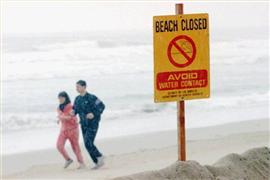Local blogger, Brian D. Hill, who lives in Mayodan, North Carolina is sending to the NC state senate and House of Representatives, facts on why Sodium Fluoride that is being added to town municipal water supplies across the state and country should be banned from all town water treatment plants across the state. 
The facts are according to two MSDS reports from two chemical companies stating that the chemical used in Water Treatment facilities is either under the term Hydrofluoric acid or Sodium Fluoride. The first chemical company, Mosaic, reported (MSDS # MOS 20011.09, issued Dec 08, 2009) that its primary use is as an industrial chemical, and has the NFPA and HMIS health hazard rating of 3.
The second document (PDF) from another chemical company, Mallinckrodt Chemicals, has issued pretty much the same rating, but has the chemical under “hazardous material” CAS # 7681-49-4.
MSDS stands for Material Safety Data Sheet, which contains specific information on chemical compounds, the level of how hazardous the material is, and other specific information required by public safety laws.
Alex Jones, a reporter and political activist from Austin, Texas, was finally allowed to tour the Austin Texas water treatment plant but was told they were not allowed to shoot video. So they used a hidden camera to capture footage of pipes being corroded by the chemical.
He even captured footage of the tank that holds the chemical compound Sodium Fluoride, but the class rating on the tank was given number 4. He called the Austin Water Treatment facility and was told to contact Charles Maddox, the Water Regulatory Manager of the City of Austin, TX Water Utilities.
Then Jones discovered that the ratings were issued by the National Fire Protection Association (NFPA), similar to the ratings found on the PDF. After calling the NFPA it was discovered that the state’s fire Marshall code enforcers, or code officials, are the ones that know about the chemical class ratings found on the Sodium Fluoride tank in the video.
According to Hill’s research, he discovered that the danger rating for chemicals once rated 3 by the Mosaic chemical company PDF in 2009 has now changed from 3 to 4, making it a severe health risk. According to the MSDS document, exposure to high concentrations of Sodium Fluoride can cause damage to the kidneys and other health problem.
‘When you do a lot of research like I have, or work at a water treatment facility and deal with the toxicity of fluoride you have to wonder why public water utility companies still add fluoride to the municipal drinking water.’ said Mr. Hill.
A news report has also surfaced from WQAD that the chemical being used at water treatment plants can actually burn on cement and requires HAZMAT teams to contain the dangerous chemical being used in municipal drinking water across America.
There is some good news to report, however; several cities have taken a stand against poisoning their water supply with dangerous chemicals like Sodium Fluoride. According to Alaska Public Radio, Palmer’s city council has voted to end fluoridation of the city’s water supply; Newbury Port News also reported that Awesbury voters turned down a proposal to add Sodium Fluoride into their water supply; and the large Texas city of College Station has put an end to water fluoridation as reported by NaturalNews.com.
Source: https://www.activistpost.com/2011/11/nc-blogger-educates-state-senate-in.html








 sending...
sending...
